Hello, everyone, it’s Kate here – to introduce a new series of conversations on the KDD blog. I was born in 1973, a year after the Treaty of Accession paved the way for Britain’s entry into the European Union. Both sides of my family are shaped by histories of European immigration, and as a teenager, the very first thing I wanted to do with my earnings from my factory job was to travel around Europe (which I managed to do in 1990). At the University where I studied, English was taught in the broader context of its connection to, and relatedness with, other European literatures. Then, when I became responsible for the Erasmus programme in one of the departments in which I worked, I saw firsthand how students from very different cultural backgrounds benefited from learning from one another. EU funding supported the research Tom and I did in British universities, and now, as a small business, our European connections are at the heart of everything we do. We collaborate with an Irish mill to produce our Milarrochy Tweed, and commission work from a wide range of European designers, suppliers, and subcontractors. Yarn and book stores all over Europe stock our books and patterns, and every day we communicate with our European customers, enjoying seeing what knitters from Sweden to Portugal, from the Netherlands to Poland, do with our designs. In recent months, I’ve been talking a lot to friends and collaborators – to our European Yarn Community, as it were – reflecting on our cultural identities as individuals and businesses, and considering the connections and networks that bind us all together in these odd Brexity times. These identities and connections might be conceptual or political, commercial or familial–they might be very different for each of us– but for all of us they are important, meaningful, substantial. I’ve decided to publish some of these conversations here, and hope you find them as interesting and illuminating as I do. The first is with Yasmin Harper of innovative yarny business, Laine des Iles. Grab a cup of tea or coffee, sit down and hear what Yasmin has to say.
Hi Yasmin! Can you tell us little about yourself and your background as a knitter?
I don’t really know why I was particularly drawn to knitting, as there is no tradition of it in my immediate family at all. I taught myself to knit when I was in my teens – unlike many women who learnt from their mothers or grandmothers, I didn’t grow up surrounded by knitters or makers of any kind.
I do have a theory about this attraction though. I am of mixed race – my father was Indian and my mother was Austrian. Neither of them had any family in the UK. My mother sadly died very young when I was only 3 years old, and my father later remarried, with my stepmother being of Asian East African origin. Her family however are all in the UK, so I grew up with a large, extended Asian family, who, true to stereotype were almost all accountants or (like my father) doctors! My mother however was a very different kind of person – a seamstress who travelled all over Europe in the 50’s and 60’s, working in Sicily, Germany and Paris before finally settling in London where she met my dad. For a young woman from a small rural town in Austria to be so adventurous at that time was very unusual, and I like to think that I have inherited some of her free spirit and creativity. My grandmother in Austria had kept a chest of my mother’s things for me which I was given on my first solo trip to see my family in Austria at the age of 16 – full of the most beautifully made and elegant clothes, and one or two knitted cardigans as well. So I would say that my desire to make must somehow just be within me, inherited from my mother.
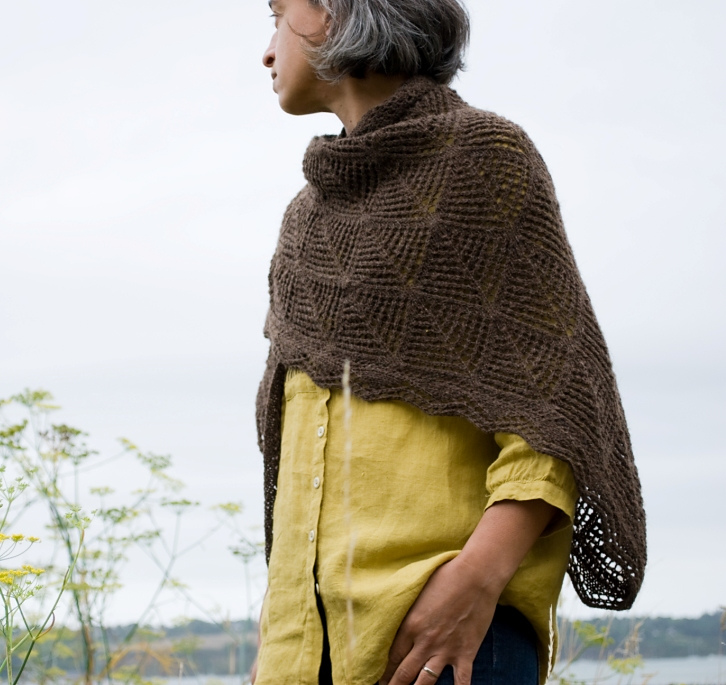
(Yasmin in Gudrun Johnston’s Halligarth)
You are British, but you moved to France to establish Laine des Iles. Can you tell us a little about what it was like to relocate and develop a new business in a neighbouring European country?
At the time of our move in 2013, my husband had seen his freelance CAD work gradually drop away after the crash in 2007, and I was in a job that really wasn’t fulfilling me. I had worked for most of my career in the fashion and then homewares trades, and I was questioning more and more the ethics of what I was doing – importing largely throwaway goods from China and just filling the world with more useless stuff. I had also started to suffer from a chronic autoimmune condition that was making normal life difficult. I felt I needed to de-stress and live more sustainably.
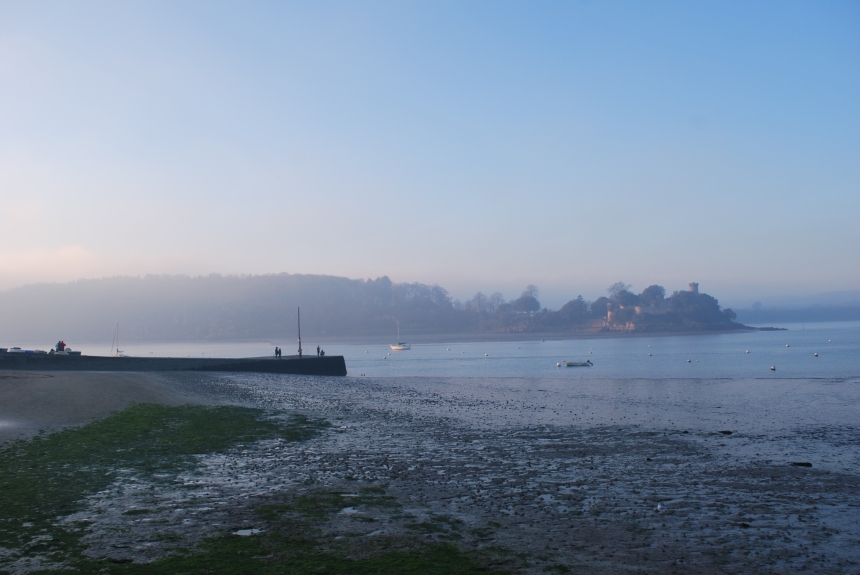
(the river Rance in a winter mist)
My husband and I met when we were already in our 40’s, and although we have friends who had had children at that age, we both felt the time was no longer right for us. Not having those ties made it a lot easier. We’d been coming to France on holiday for several years, and in the end we just thought, why not? Property in Brittany is very cheap compared to the UK, and selling our house in London left us with enough profit to buy the kind of old farmhouse with land that in the UK is only available to those with deep pockets – much as we would have liked to, it wasn’t within our reach financially in the UK. With the benefit of free movement, it was extremely easy to make the move. Many people, I think, have the impression that moving abroad is a preserve of the rich, but there is a very large British community in Brittany who were attracted by the cheaper property, and most of them are just ordinary folk who wanted a better quality of life and were able to find it here.
Starting a business in a new country may seem daunting, but actually it was not hard at all. The large expat community (not only British, but from all over Europe) means that there is always help and advice to be had from others who have done it before. My husband had always joked about me having my own wool shop, so I decided to give it a go. My previous background had at various times covered wholesale buying, logistics and sales/customer service, so I had the right kind of experience to set up a retail business. I found that unlike the UK, the online sector for yarn offered a fairly limited choice in France, and I saw real gaps in the market. Setting up a small business is easy in France, there are simplified regimes for the self-employed. I had never worked for myself before and was a little afraid of taking the plunge, but it’s been surprisingly painless!
What do you particularly enjoy about living and working in Brittany?
After spending most of my life in London, the peace and quiet and sheer space that we have now is quite wonderful. We have 1.5 acres of land bordered by a stream, and it is rare that a day goes by without seeing deer, hares or red squirrels in the garden (although I admit that the occasion a 20-strong family group of wild boar decided to drop in was a bit hair-raising!)
We live in a village on the River Rance, an estuarial tidal river, just a short drive from the stunning North Brittany coastline, so there are plenty of beautiful walks in the area, and of course fabulous clean beaches in the summer.

(Yasmin’s niece, Thea, with Mordreuc’s most famous resident – Josephine the seal)
We chose this area for its coastline, but also as we are only 20 minutes from the ferry in St Malo, so it’s very convenient for popping back to the UK when we need to – and far less hot than the south of France. Although it feels very rural where we are, we really have the best of all worlds, as we can get to Rennes (the capital city of Brittany) in half an hour, from where we can also get a TGV and be in Paris in under 2 hours if we feel the urge for city life – which to be honest I rarely do any more!
What does an ordinary day running Laine des Iles look like for you?
Mornings are usually spent answering customer emails and queries, followed by packing up the day’s orders. After lunch I go and drop off my parcels at the post office and other drop-off points, and the rest of the day could then be spent in a number of ways depending on what needs doing: it might be sorting out any deliveries that I’ve had, placing orders with suppliers, accounts and admin, photographing new yarns, website maintenance and updating, writing my newsletter, researching new products or even translating a knitting pattern into French! It can be pretty varied, and even during “quiet” times I am never short of things to do. In fact it can be hard to fit in any actual knitting!
Laine des Iles has a distinctive focus on the knitting traditions, yarns and aesthetics of the islands and outlying areas of Britain, France and the Nordic countries. Can you say a little about your decision to use your business to highlight the important woolly heritage of these areas?
If I’m honest, it wasn’t my original plan. Originally I had intended to set up an exclusively British yarn shop. I’m very proud of the UK’s particular woolly heritage, and noticed that quite a number of beautiful British brands, yarns and sheep breeds were completely unrepresented and unknown in France. I had really wanted to showcase British products and show them off to an audience who perhaps didn’t know much about them. However, when the EU referendum took place, I felt that it might be a mistake to put all my eggs in one basket as I had no idea what might happen in the future and didn’t want to find myself limited.

(Snaeldan)
Rather than be disappointed, I realised that this gave me the perfect excuse to sell some of my other favourite yarns, such as Snaeldan and Ullcentrum, which were also unrepresented here. When I started to research further products for the store, a pattern soon emerged, and I began to understand how important the islands of northern Europe were in the history of sheep farming, wool and knitting. It was clear that this wasn’t a coincidence – waves of Norse, Scottish and Irish settlers travelled across the Northern seas, bringing their sheep and their traditions with them. Many of those sheep breeds are sadly now endangered, so by choosing to specialise in island yarns, I hope I can contribute in my own small way in supporting those who keep them alive.
To me, islands suggest separateness and interdependence simultaneously – surrounded by the sea, but always looking outward, like the lighthouse in your logo. What do islands mean to you?
I think that’s a very good way to describe it. When we think of islands, we perhaps think of insularity in a negative way, of closed communities who don’t welcome outsiders. But when you look at the history of the islands of northern Europe, what you find are populations who traded extensively with their neighbours and territories beyond; you find seafaring communities of enormous curiosity who travelled far beyond their own shores, some of them even “discovering” America long before Columbus. The islands of Scandinavia, Great Britain, Ireland, Brittany and the North Atlantic all have shared histories, none of these communities evolved in isolation. It underlines for me the fact that we are all connected, we all need each other and can benefit from what others have to offer. It’s become something of a cliché these days, but in the oft-quoted words of John Donne: “No man is an island entire of itself”. Those words still ring true, perhaps truer than ever these days.
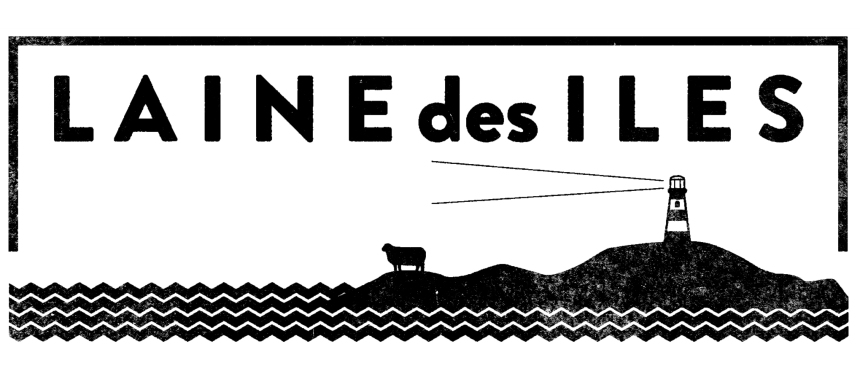
You stock a range of beautiful yarns from Jamieson and Smith to Hélène Magnusson’s Gilitrutt and obviously enjoy really woolly wool. Do you have a favourite sheep breed, or a favourite type of sheepy yarn to work with?
All breeds have their own special character, so it’s hard to pick one, but if pressed to choose a particular breed-specific wool, it would probably be Shetland. It’s such a good all-rounder – a good quality worsted spun Shetland yarn can be soft enough for anyone who fears “scratchy” wool, a laceweight is perfect for the most delicate shawls, and of course there is no better yarn than Jamieson and Smith’s 2 Ply Jumper Weight for colourwork.
As far as actual breeds go, I have developed quite a soft spot for the Breton native Ouessant sheep – another descendant of the Vikings’ sheep. Ouessant is a small island off the western Atlantic coast of Brittany, a pretty wild place where the grazing and nutrition was so poor that the sheep evolved into the smallest breed in the world. Nowadays, being too small to be of interest as a meat breed, they are mainly kept as pets and/or for conservation grazing. They have become quite popular as “green lawnmowers” and you see them around here quite often. The true Ouessant is an all-black breed, but you do see some white variants. They are tiny and terribly cute.
What do your customers particularly enjoy about Laine des Iles?
When I first came to France, I found that there was in general a very strong preference for “soft” yarns, and everywhere I looked I saw merino, and a lot of superwash. I have nothing against merino per se, far from it – but so much merino is imported from Australia where of course there is the danger of mulesing, and from an environmental point of view I am certainly not in favour of superwash yarns. I find it quite frustrating that there is no requirement to label a yarn as superwash or for manufacturers to explain on their labelling what this means (essentially, that it is plastic-coated). I still find a lot of customers who react with surprise when I tell them this – they just don’t know.
I really wanted to buck this trend and show people that other breeds, and more natural types of yarn have their own merits, and I’m finding that my customers are really appreciating this and are enjoying trying new yarns that they didn’t know before. I don’t claim to be the only person promoting more natural yarns in France, but I think I have been one of a relatively small number who are trying to make the move away from what was the norm, and show customers that there are other choices beyond a superwash merino.
 (Myrtha, by Katrin Schneider: a collaboration with Laine des Iles knitted in Snaeldan)
(Myrtha, by Katrin Schneider: a collaboration with Laine des Iles knitted in Snaeldan)
Another important aspect I think has also been customer service. One thing I have taken from my previous experience is that transparency and good customer service is possibly the most important thing of all when running a retail business. I always try to answer customers emails within 24 hours, to give them as much help and advice as I can and never to fob them off – it’s better to just tell a customer the truth than to try and make an excuse, and they will always appreciate that more than anything.
Recently I’d sent one of my regular customers some photos of different colour combinations to help her choose – she thanked me for all my help and I told her it was no problem, it’s my job. She replied “Yes, but not everyone is like you”. At that point, you know you must be doing something right!

(Yasmin at local Normandy yarn festival, Le fil de la manche)
What does being a “European” yarn store mean to you?
I suppose that to answer that question, I first have to think about what being European means to me on a personal level. I was born and brought up in the UK, and despite being of immigrant descent, I do identify very strongly as British (and/or British Asian). But my family ties (I have relatives in Austria, Germany and Italy), my studies (a degree in German and Italian) and then later my work (in export sales) mean that I’ve also always had a very strong connection to Europe. I never thought of being British as being something separate, but more as being one of many cultural identities that made a whole.
I barely remember a time before the European Union, and although it’s not a perfect beast by any means, as a postwar project for peace, it really has delivered. By bringing so many seemingly disparate groups and countries together in a spirit of friendship, we have seen the longest period of peace that Europe has ever known. As someone whose relatives were on the losing side of the last world war (my mother’s oldest brother was in the Wehrmacht and died on the Eastern front), I can’t describe how important that is for me. Europe for me means connection – to other cultures, to our fellow human beings.
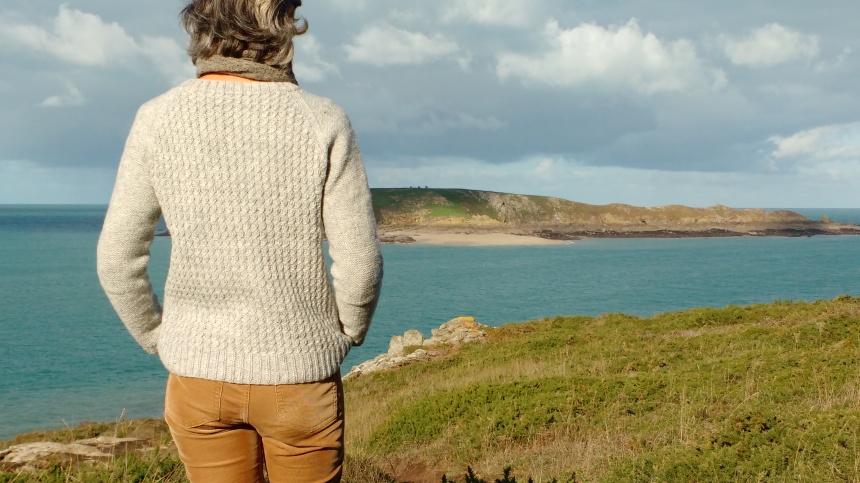
(Yasmin in her Bedford sweater at St Briac)
And that is reflected in my shop. When researching the yarns for my shop, I was fascinated by all the relationships that I found between the regions and the breeds – even “pure” British breeds that may not seem to have much connection to any of the northern island breeds share common ancestors. And likewise with the history of knitting itself – no one place can lay claim to knitting as its own. Ideas, influences and patterns travelled across the seas. The obvious similarities between Latvian, Norwegian and Shetland colourwork for example, indicate that some exchange or bartering of ideas or goods gave rise to these motifs and techniques. In the end, we really are all connected, and that, for me, is something to celebrate.
On a much more mundane and practical level of course, being a European yarn store means that, thanks to free trade, it is extremely easy, even for a small business such as mine, to import and stock whatever I want. A no-deal Brexit will mean far more work and expense to stock British yarns, but of course I will continue to do so, as what range of island yarns would be complete without British wool?
So, what’s next for Laine des Iles?
I’m always trying to find interesting brands that fit in with the theme and the ethos of the shop, and already have an important new brand lined up for the shop for this autumn. But like any self-respecting yarn retailer, I’d also really love to have my own brand. I have several ideas, but what is currently really missing from my shop is a French yarn, so I’m currently on working on some plans for a French yarn (with some kind of island connection of course!) which hopefully will be launched in the shop next year. Watch this space!
Thankyou so much, Yasmin, for sharing your story and the story of Laine des Iles!

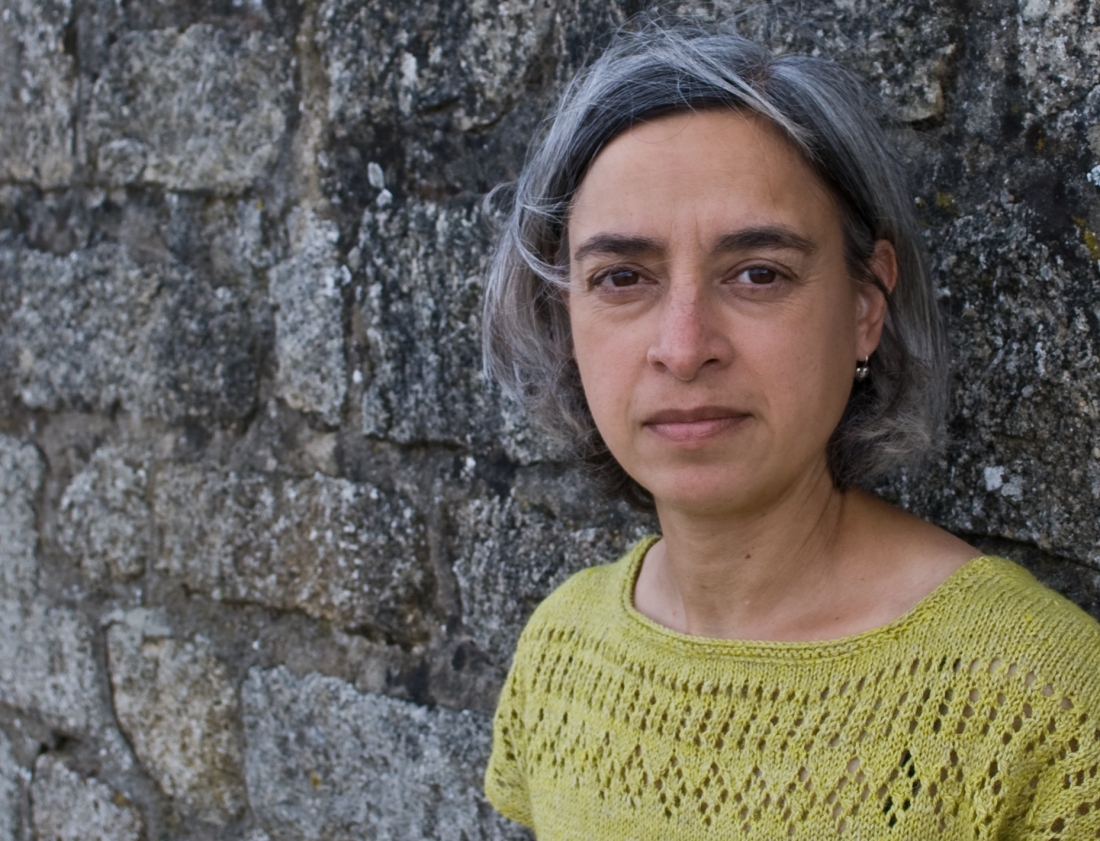



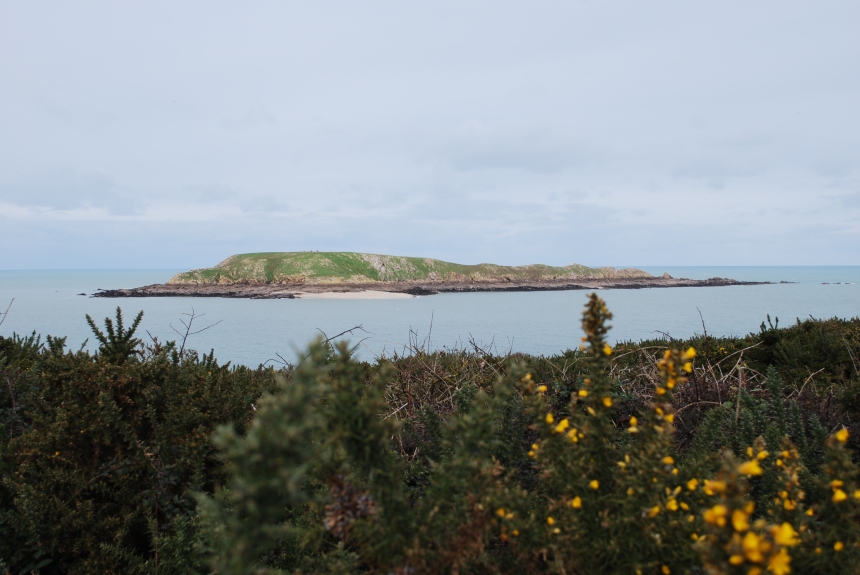

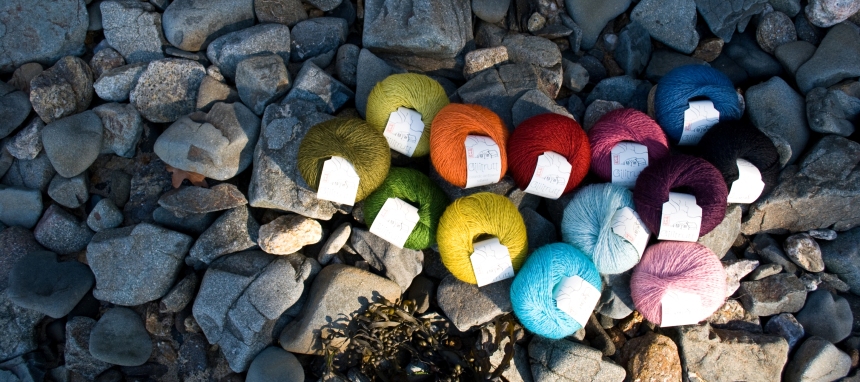
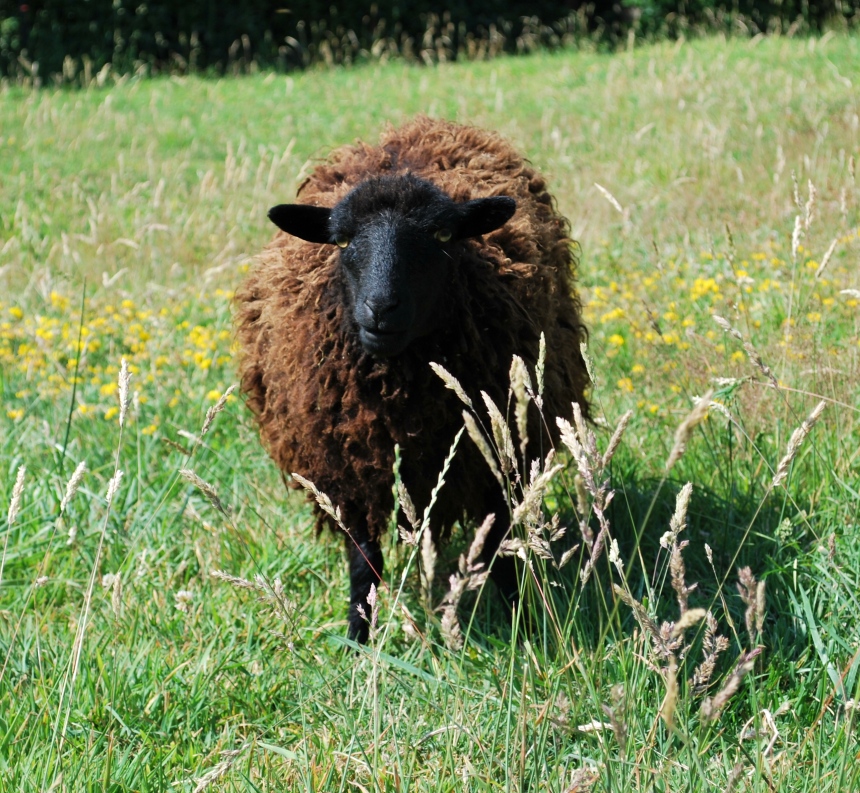
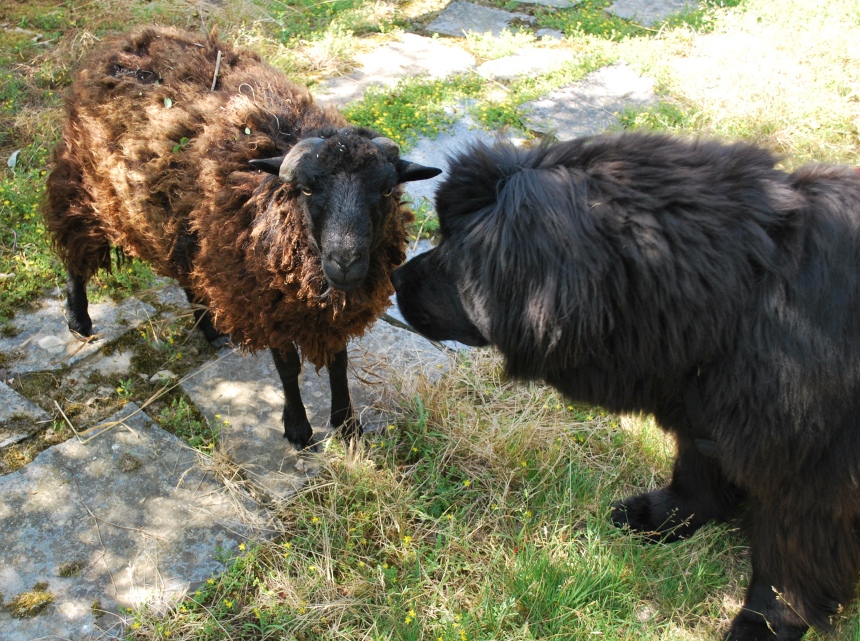
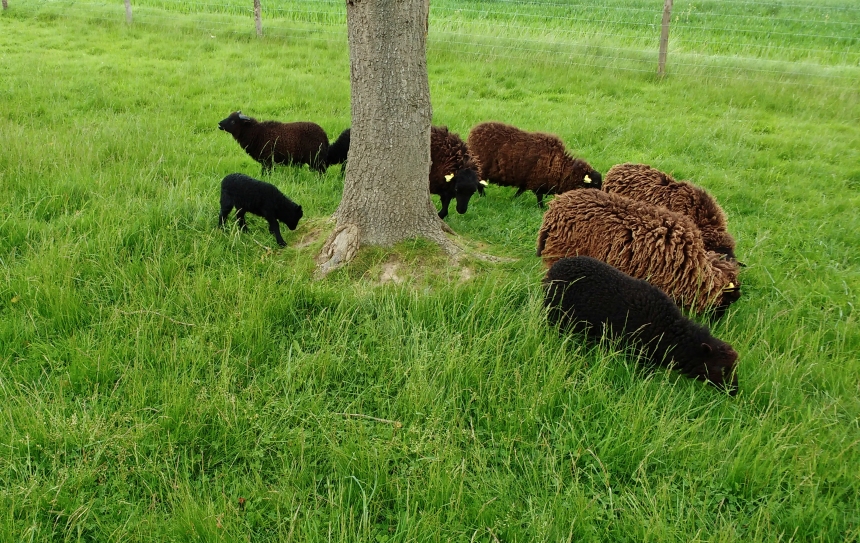
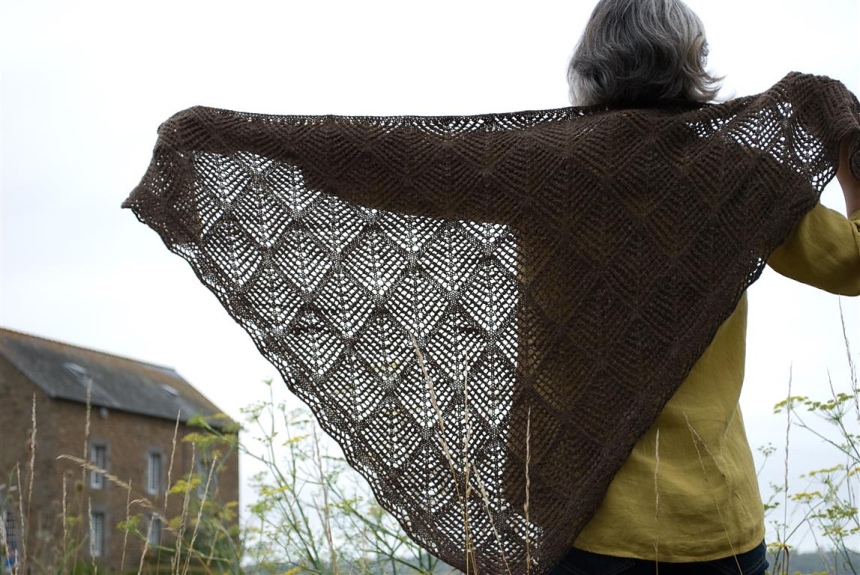

I’ve just discovered this interview… and I also discovered Laine des Iles recently, which allowes me to connect to the work of Kate Davies. I really appreciate ! I learnt to knit when I was a very young girl and never stopped. I’m still learning about knitting… And it’s great to see that there are some passionate people.
LikeLiked by 1 person
Dear Kate,
Thank you so much for your very sensitive article about Brexit and for introducing me to Yasmin’s shop. I’ve been a European ever since I can remember, born and brought up in Lancashire, not far from where you come from if I’ve got that right. Left in 1970 and never went back. Lived in Germany, France and now in Switzerland and have always loved the differences and interdependencies that keep us together. I have been very sad about Brexit but perhaps the least said the better….
I bought a snood from you for my daughter’s birthday and she absolutely loves it, I saw it at Christmas and the quality is exceptional. Could I possibly suggest that you offer more ready made items? I’m 73 now and don’t knit so much after getting a tendinitis ( through knitting too much! ) but love your designs and wools.
Tom’s photos of the wintry landscapes and the moon are really beautiful,
Best wishes for 2021 and the transition,
Judith Johnson
LikeLiked by 1 person
I too moved to Brittany from a large city (Paris) and having had to go back for a day recently, I said to myself that I was so lucky to be out of that. My daughter left Paris several years ago and will never ever go back.
The British community around me have all asked for French nationality or claimed other European nationalities through birth. They are an integral part of the local communities where they live.
I have ordered from Yasmin several times and was thrilled with the service and the yarn.
LikeLike
Thank you so much for this article. I so look forward to Mondays when I receive your updates. At the time when I find myself so easily distracted in my reading I hang on every word you write and find myself wanting more.
LikeLike
“Europe for me means connection – to other cultures, to our fellow human beings.” This is so right. It is such a shame that many British does not feel that way.
LikeLike
Thank you both for reminding me of the inter-connectedness of our lands, our history, our culture and our humanity.
LikeLike
Merci pour cet article très intéressant et éclairant. Ce n’est pas le coin de Bretagne que je connais le mieux, mais il semble être magnifique également. Quant au choix de laines… à faire rêver !
LikeLike
Excellent and informative article. Always good questions that evoke great answers. Thank you both. I too would like to know the pattern name of the sweater she is wearing in the last picture. Love that colour.
LikeLike
Hello Susan, the pattern is Cullum by Isabell Kraemer, I’ve knitted it here in Blacker Yarns Lyonesse 4 Ply. Hope that helps! Yasmin
LikeLike
Thank you Kate and Yasmin. I did indeed enjoy reading with a good coffee and learned much. Appreciated.
LikeLike
Thank you so much Kate and Yasmin for a really interesting piece, and for focusing attention on how interconnected we all are, whatever might be happening on the wider stage.
LikeLike
I have thoroughly enjoyed reading this interview and have learned so much. Never knew about super wash wool being plastic coated. What an eye opener. I have never bought it and never will. It’s definitely something to watch out for in ready made garments too . I do so enjoy your posts Kate, just so interesting and educational. Good luck Yasmin. Your business sounds wonderful
LikeLike
Thank you for this wonderful and thoughtful introduction to Yasmin and discussion of inter-country culture and life.
LikeLike
A brilliant, fascinating blogpost – thank you both, Kate and Yasmin. Must say, it makes me yearn for France, which I know from many years of cycle tours, especially in Normandy and Brittany.
I really like the cap-sleeved knit Yasmin is wearing in the final photo. Is it possible to find out what the pattern is?
LikeLike
Hello Michelle, glad you liked the post. The top I’m wearing is the Cullum tee-shirt by Isabell Kraemer. I’ve knitted it here in Blacker Yarns Lyonesse 4-Ply. Yasmin
LikeLike
Really enjoyed this. We recently spent 2 weeks in Normandy and loved it. And I’d wished that we’d made it to Brittany, for several reasons. The photos here are beautiful and display landscape and waterscape much as I’d expected. I would love to move there myself! As for Yasmin and her business — so very impressive! And Yasmin’s yarns and knitting are gorgeous.
Question for Yasmin — do your sheep also produce good milk for your homestead? I both knit and make cheese at home, so curious about that too.
LikeLike
My German/English parents bought a small house on the north coast of Brittany 28 years ago and we‘ve been going with our (Swiss) family ever since. Our daughters (two of whom are knitters) now go with their own families/spouses, it‘s beautiful and there‘s something for everyone… Since I discovered Laines des Iles I have made a point of ordering some wonderful wools on each of my visits (I spend 6-8 weeks in Brittany every summer at least), so it was great to read all about Yasmin!! My middle daughter lives in France, near Geneva, but also enjoys these types of wools and I know she orders from Yasmin, too. We rate Laines des Iles very highly!!
LikeLike
Hello Susan, the sheep in the pictures are not actually ours. Although we have a lot of land, and are in the process of developing a permaculture fruit and veg garden, the rest is partly a cider apple orchard and partly woodland with a stream. There is a grassy area but as this is visited by a lot of wildlife (because of the stream), we have decided to leave it as a wild meadow in order not to shut the wildlife out. The 2 individual sheep belong to a neighbour of a friend, while the small group is part of a flock used by a local company for conservation grazing on land around their premises. The Ouessant sheep are really so very small that they are of no use for milking, they are not a milk breed. France does have a number of very good milk breeds, but most of these are from the Pyrenees or Corsica. I hope that answers your question – and yes, do try to visit Brittany some time, it is a beautiful area.
LikeLike
Wonderful interview! Makes me long to return to Brittany and visit the shop!
LikeLike
Unfortunately there is no shop, the business is online only. However, we do show at one or two yarn festivals, and there may be the possibility of visits by appointment at some point in the future.
LikeLiked by 1 person
A thoughtful, beautiful interview. Thanks for introducing me to Ms. Harper.
LikeLike
Fascinating conversation…my thoughts echo all of those already articulated. I’d like to add something different: a hearty thanks for a long, well-written, cohesive blog post. In a very short time, so many great knitting blogs have gone the way of Instagram…and I’m truly glad that this one has not. I appreciate the time it takes to create a well-written blog post and am grateful that some (you, Kate!) are still willing to put forward that effort for those of us who love to read about the world. Thank you!
LikeLike
I heartily agree!! Loved this interview.
LikeLike
A really interesting read, look forward to more in the future :)
LikeLike
I really enjoyed this interview. I learned more about yarn shops, yarns (didn’t know about superwash) and the views on “European” and “Brexit” were very interesting. A more educated reader/knitter.
LikeLike
Sorry about the typos, got cataract!
LikeLiked by 1 person
This means so much to me. Living in North Ronaldsay I have sheared, spun, dyed and knitted native wool, our lives are entwined with those of our visitors from all over Europe, I have Dutch, French and German ‘cousins’, a Hungarian ‘granddaughter’, friends who have become family, I went to school for a year in the Black Forest, to university in Norway for a term, and have a whole family in southern Sweden who are among my dearest friends. From all I have learned knitting and embroidery techniques, used wool from all these countries, look on them all not as ‘foreigners’ but as an integral part of our lives. Our children have all studied in Europe and our granddaughters and daughters are skilled and innovative knitters, i love Europe, and am part of it. Thank you Kate for this wonderful blog. Incidentally my granny was born near Gartocharn and it goves me so much joy to see your photos. 🥰
LikeLiked by 3 people
This was a beautiful and moving article. Thank you, Kate. I found that it is a lovely and inspiring metaphor for many of the problems in the modern world, and the photographs or a joy to view.
LikeLike
An elegant read.
LikeLike
Great interview and what a lovely place Yasmin now calls home! I just love the idea of a local-to-her yarn and look forward to seeing that.
LikeLike
Dear Kate, it is so good to be connected to you again. This interview with Yasmin was eye-opening as well as a totally delightful read. I have been backing away from superwash wool and now I am going to quit buying it altogether. “Plastic coated “ really struck me hard. I will look forward to more such interviews.
Lindy Barnes in northwestern Lower Michigan, USA.
Sent from my iPhone
>
LikeLike
Thank you for emphasizing non-superwash wools. I stopped using superwash wool out of dissatisfaction with the end results of my knitting, then started to research the processes used to create superwash in an effort to find out what was going wrong. What an eye-opener! Now, I love to find new to me, less processed wool and will look forward to exploring your online shop.
LikeLiked by 1 person
I’ve bought several times online from Yasmin and it’s lovely to put a face to the name! Excellent customer service and a beautiful range of yarns (some of which you can’t get in the UK). Fingers crossed we all weather whatever Brexit throws at us – and that small-producer, rare-breed and environmentally friendly yarns continue to become better known across the UK and Europe. If you care about “slow fashion” and are bothering to take the time to knit something, it’s worth sourcing a worthy yarn and it’s great to find retailers who can find these and tell you something about them.
LikeLike
Both you and Yasmin spoke of so much that deserves to be thought about at length. Being from the US gives me a different perspective and makes me eager to learn more about the life, politics, people, and culture of other citizens of our world.
LikeLike
Thank you, Kate and Yasmin, this was a joy to read. <3
LikeLike
Kate, you‘re the best!
I couldn’t stop smiling while reading the preview of the post and already (rightly) assuming what it would be about.
Thank you for raising your voice without ever losing dignity or respect for one another (referring to many topics you wrote about).
It means a lot to me; thank you :)
LikeLike
Thank you for this great post. I AM old enough to remember life before 1973 [I was at Uni then] My daughter and her partner work for UCL and are really upset by the way Brexit is screwing up the wonderful ERASMUS programme. I continue to hope and pray that things won’t be as bad as we fear…
LikeLike
So glad you are showcasing Yasmin. I am shopping occasionally on her store and always got great service. Brittany, where I also live, is indeed a beautiful region. I find it really great to find an online yarn store that sells unusual and beautiful yarns like hers, on top of magazines and the usual accessories. I can only hope to see her extend the range of choices, and I’m glad to support a small business whenever I can. She’s on my preferred stores list.
LikeLike
Thank you for this interview! I have been a customer of Yasmin’s for some time and it’s very interesting to know more about her background and her views. I discovered some wonderful yarns through her and I especially appreciate her partnership with designers such as Orlane Sucche or Katrin Schneider. Also, i can attest that customer service is not a vain word at Laine des Iles!
I find Yasmin’s words especially intersting as it challenges the common perception of British expats as weatlhy folks responsible for the inflation of local housing property. This perception is widely shared in Brussels, where I live, as well as in the West of France. Reading Yasmin’s background is a welcome reminder of the other kind of “wealth” that expats bring to local communities :-)
LikeLike
Can I second your last paragraph! I am originally from Lancashire but retired to a small town in SW France when I retired. I only have a modest pension from many years working in social housing (in my day it was council housing!) and own no property but rent a tiny medieval house. However, I feel rich in so many other ways living here – not least in the welcoming way I have been received into the community. Brexit is breaking my heart!
LikeLike
An excellent and true reminder of what the politicians in this country are throwing away.
LikeLike
It feels poignant to read this in the current political climate – Donne’s poem has come to mind such a lot recently, in a few different contexts.
Wonderful to be introduced to Laine des Iles, the Brittany landscape and some lovely sheep and patterns too.
Thank you both – I’m going to enjoy these conversations.
LikeLike
Very interesting.
LikeLike
Excellent way to talk about this topic. Thank you!
LikeLike
Very interesting – thank you both.
LikeLike